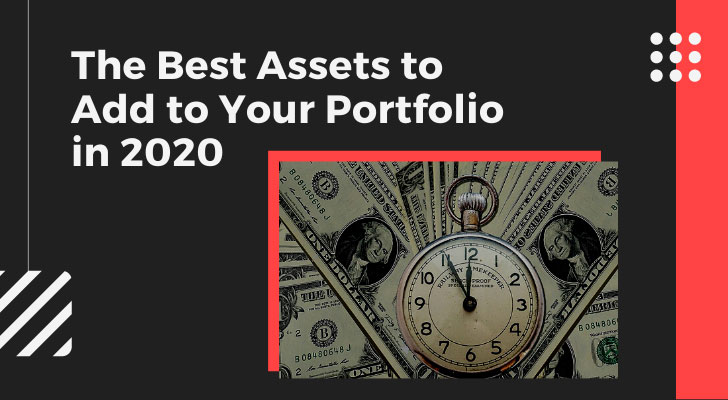For those who are looking to supplement their income without taking on a second job, investing can offer an ideal solution. While it does come with some inherent risks, and profits are never guaranteed, it can nonetheless be a fantastic way to boost your capital and increase your wealth over time.
The trick lies in choosing your portfolio assets wisely. That’s because different investment instruments carry varying degrees of risk, so to meet your financial goals, you need to pick options that are suitable for your long-term strategy.

This can and should change over time, with external factors having a notable impact on the financial markets and how they perform. 2020, for example, has been characterized by a substantial degree of volatility, meaning certain assets are more suited to the current climate than others.
If you’re wondering what these are, we’ve carried out some research on your behalf. Taking into account the pervading economic circumstances, we’ve selected the sorts of options that offer the best financial prospects in 2020.
Here are a few for would-be investors to consider.
High-yield savings accounts

Given current market conditions, safe investments are a good choice for padding out your portfolio, and high-yield savings accounts fit the bill. Easy to access, they won’t tie your money up indefinitely, but they can still deliver attractive profits. Where they differ from ordinary savings accounts is in their much-increased interest rates, with some online banks paying over 1.5 percent according to research conducted in May of this year. Involving next to no risk due to their FDIC-insured status, these are a highly liquid asset, meaning you can add or remove money at any time.
Short-term corporate bond funds
Another option is short-term corporate bond funds. The way this works is simple: businesses looking to raise additional capital by issuing bonds to investors. Taking, on average, between one and five years to mature, these tend not to be hugely susceptible to interest rate fluctuations, which can be a good thing in a volatile market. A great way for small investors to gain exposure, short-term corporate bond funds are an especially wise choice for those whose main aim is to supplement their cash flow, as they carry a low risk while still earning a typically healthy return.
The downside is that they’re not FDIC-insured, but the upside is that they often deliver higher returns than their government or municipal bond fund alternatives. Besides, they’re pretty easy to sell if you want to free up your capital for any reason.
Forex

For those looking for a higher-risk, higher-reward option, we’d suggest going the other way and exploring the much more volatile foreign exchange market. While profits in this arena are never guaranteed, an upside to investing in forex is that you can take advantage of both upwards and downwards trajectories.
As markets are open 24 hours a day, five days a week, it’s possible to continually alter your strategy to bring it more in line with external market happenings and your own financial goals. Also, transaction costs are frequently low, so chopping and changing is not a major issue from a financial perspective. That being said, it is important to have a suitable broker, so we’d recommend taking advantage of demo accounts to see what’s out there. This will give you an opportunity to try various options, which is important given that this is a time-intensive form of trading that will require you to spend many hours each week on your preferred platform.
Dividend stock funds
Another option worth looking into is dividend stock funds, which are particularly useful for those who want to find a middle ground in terms of risk. While these are not dissimilar to stock market investments more generally, they’re just a little bit safer, which can make them a handy addition to your portfolio. A major boon is that they offer two ways to turn a profit: firstly, through long-term market appreciation, and secondly, by paying dividends – i.e. a portion of the company’s profits – in the interim.
In addition, they’re attractive with regards to their liquidity, as it’s possible to buy and sell funds as and when it suits.
For those considering investing in 2020, the key is to build a portfolio that works for you, and these four assets can each make useful additions. Which of them sounds best suited to your long-term goals and strategies?
